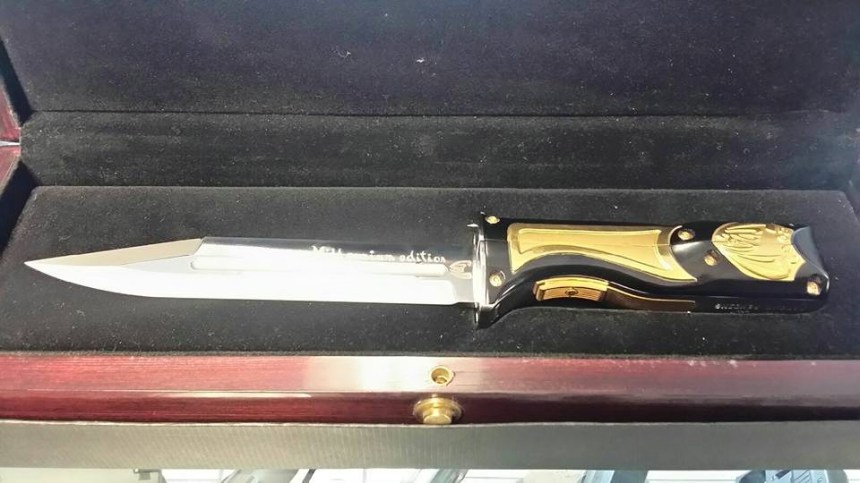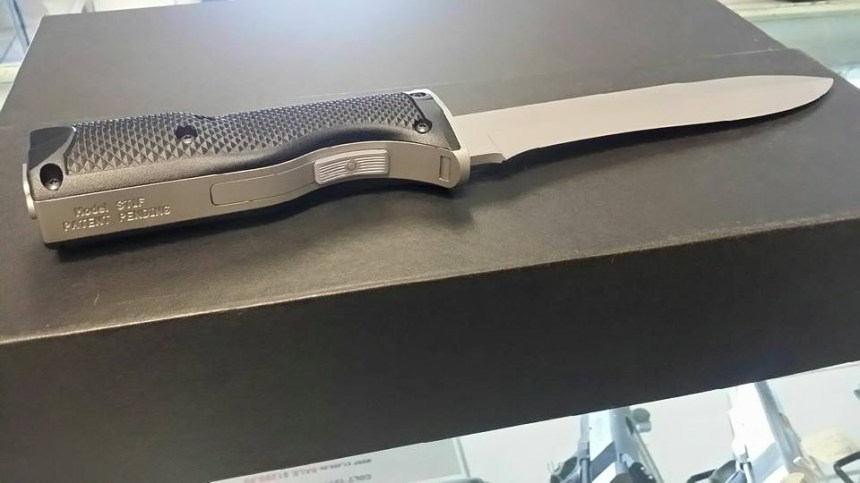
In the late 1990s, the Global Research and Development (GRAD) Company designed the world’s first production fixed blade knife that held a multi-shot firearm inside its grip.
GRAD produced four knives, three of which contained working 22LR double-action revolvers. The knife in each case was a high-quality 440C heat-treated high carbon stainless steel single edged fixed blade. Inside the grips lay the cylinder for the revolver with a 1.75-inch rifled barrel. In the lower half of the knife handle a spring-loaded trigger lever could be pulled down and when depressed would fire the revolver. The barrel’s muzzle was shrouded by the top half of the grip and fired over the top of the blade through the hilt of the knife.
To load and clean the revolver, the grips separated and folded open, allowing access to the concealed gun.
They came in several variants.
The Hybrid Standard Edition of the knife had black aluminum checkered grip panels and held a 5-shot revolver. A deluxe 22-karat gold-plated Millennium version of the Standard had a highly hand polished blade and frame.



The Hybrid Bayonet held a 6-shot revolver and mounted to the standard NATO bayonet lug carried on the M16/AR-15 style rifle. The bayonet version could be fired either mounted or unmounted to the rifle. The knife only version, the Model RS1N, was the base knife with no barrel or firing assembly.


Across all versions, less than a thousand of these weapons were made. The company history is murky; they seem to have folded around 2007 and as such have no warranty or production to fall back upon.
The firearms versions are all NFA Title II weapons and are transferable under the $5 Any Other Weapon clause. When new and still in production they sold from $699 for the Standard models to $1999 for the gold-plated series. Today if you can find one today, they basically worth whatever the market will pay and are rare at any price.
And the ATF generally frowns upon keeping and/or selling them or any other neat AOW such as cane guns without the proper paperwork, as exemplified by a pair of Big Pine Key FFL holders last week.














